Music and Maths: A Yardstick to the Stars | reviews, news & interviews
Music and Maths: A Yardstick to the Stars
Music and Maths: A Yardstick to the Stars
Exploring a sociological answer to the question of the relationship
The history of maths and music is the history of early Greek philosophy, medieval astronomy, of the Reformation, the Enlightenment and the two World Wars. While mathematics at its purest may be an abstraction, the quest for its proofs is deeply and definingly human, charged with biological, theological and even political motive. Whether through performance or discussions about music, this year’s Cheltenham Music Festival (which begins this week) explores the mathematical processes that have both shaped and echoed the history of Western Europe and its art, tracing musical development from the polyphonic motets of the 14th and 15th centuries to the Minimalist patternings of Steve Reich.
If music’s relationship to mathematics were purely numerical, purely a matter of counting and calculating, interest in this field could easily be consigned to the dusty ponderings of academics and theorists. It is the altogether more allusive (not to say elusive) relationship between these two disciplines – a relationship of metaphor and translation, of creativity as well as explication – that continues to compel the attention of philosophers, artists and laymen alike. Mathematics may be at work in the most elemental practices of Western music, shaping our 12-note octave, tuning our instruments and transporting music to our ears, but its history is at its most interesting as a narrative of social rather than technical developments.
“Ars sine Scientia nihil est” – “Art without knowledge is nothing”. The response of Jean Vignot, 14th-century architect of Milan’s magnificent dome, when asked for his advice on the project, could well serve as the motto of his age. Following the philosophy established in the teachings of Pythagoras and later Plato, music in medieval universities joined arithmetic, geometry and astronomy in making up the Quadrivium – the highest disciplines of the liberal arts.
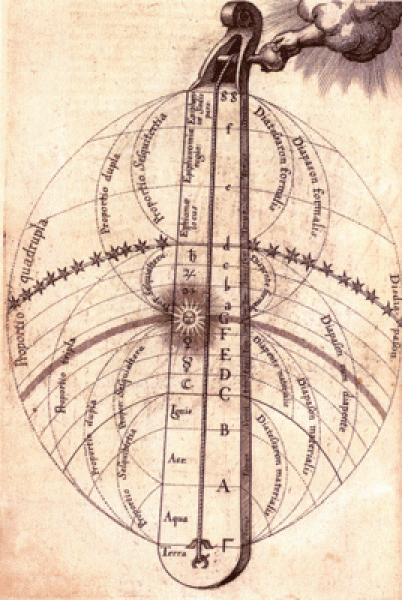 It was here, in the Pythagorean concept of an almost mystic relationship between mathematics and music, that the work of Bach, Mozart and even Messiaen had its birth. As Andrew Barker has explained: “Researches in harmonies arose out of a conviction that the universe is orderly, that the perfection of a human soul depends on assimilating itself to that order, and that a key to the understanding of its nature lies in number.”
It was here, in the Pythagorean concept of an almost mystic relationship between mathematics and music, that the work of Bach, Mozart and even Messiaen had its birth. As Andrew Barker has explained: “Researches in harmonies arose out of a conviction that the universe is orderly, that the perfection of a human soul depends on assimilating itself to that order, and that a key to the understanding of its nature lies in number.”
It is this elision between celestial, theological and numerical order that makes the music of the transitional late medieval period so eloquent a social document. Just as Alberti’s development of perspective was reconceiving the mimetic relationship between painting and its real-world subjects (and by extension the relationship between man and the divine), so bass-driven harmony and the advent of polyphony fundamentally shifted the axis of composition; from being a horizontal structure music became a layered, vertical one.
With numerical order all-pervasive, just as music became number in time so architecture became number in space. Few pieces express the relationship between these philosophies so dynamically as Dufay’s motet Nuper rosarum flores. Composed for the consecration of the Florence dome in 1436, the work offers one of the most complex surviving treatments of isorhythm – a structural technique in which one or more of the vocal lines was built around a formal sequence of rhythmic repetition. Director of early music vocal group the Brabant Ensemble, Stephen Rice explains: “Brunelleschi’s dome was a magnificent feat of engineering, and it is thought that its double dome is reflected in the motet’s double isorhythmic tenor. It has also been suggested that the specific structural proportions of the piece mirror those of the cathedral itself, or possibly relate to the Temple of Solomon as discussed in the book of Kings.”
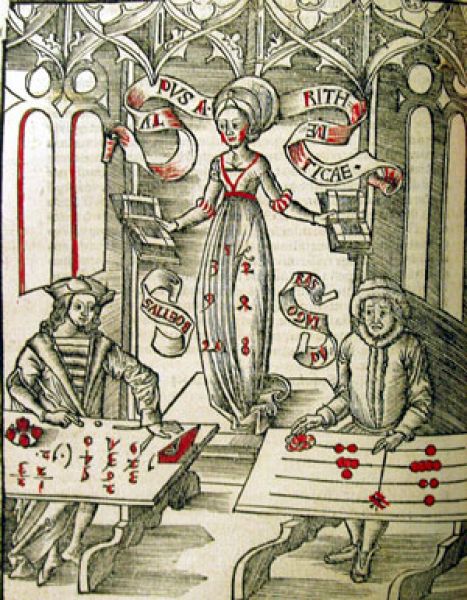 While the mathematical patterning of Dufay’s motet and many of the complex canonic and isorhythmic works of the period are exuberant exercises in compositional skill, their intricacy matching the pomp of festal occasions, others such as Josquin’s Inviolata, integra et casta es (a work dominated by the Marian number 12) use traditions of mathematical symbolism to contrasting religious effect. Such number symbols represent another enduring strand within mathematical music, and one mistakenly synonymous with Bach, as Ruth Tatlow, author of Bach and the Riddle of the Number Alphabet, argues.
While the mathematical patterning of Dufay’s motet and many of the complex canonic and isorhythmic works of the period are exuberant exercises in compositional skill, their intricacy matching the pomp of festal occasions, others such as Josquin’s Inviolata, integra et casta es (a work dominated by the Marian number 12) use traditions of mathematical symbolism to contrasting religious effect. Such number symbols represent another enduring strand within mathematical music, and one mistakenly synonymous with Bach, as Ruth Tatlow, author of Bach and the Riddle of the Number Alphabet, argues.
“The whole business of Bach and number symbolism is a late-19th-century myth. You can find the patterns yourself but you can’t prove that the composer consciously put them there unless you have some very explicit external evidence. Numbers and proportions were a very important part of the culture of 1740s Leipzig, so yes Bach knew number alphabets, but there’s no guarantee that he used them, or if he used them that he used them every time.”
Numerology has been used by musicologists to discover retrospectively everything from the use of the Golden Ratio in The Well-Tempered Clavier to the composer’s musical signature in The Art of Fugue and theological formulas in the Mass in B Minor. Whether deliberate or not, the patterns are certainly present, something Marcus du Sautoy accounts for biologically. “We’ve survived as a race by finding patterns and structures. Often you ask yourself whether a composer intended to create a pattern, but even if they didn’t they were probably drawn to the special properties of a structure that a mathematician might articulate numerically but which as a composer they have constructed more intuitively. Some patterns have intrinsically special properties that are aesthetic as much as they are mathematical.”
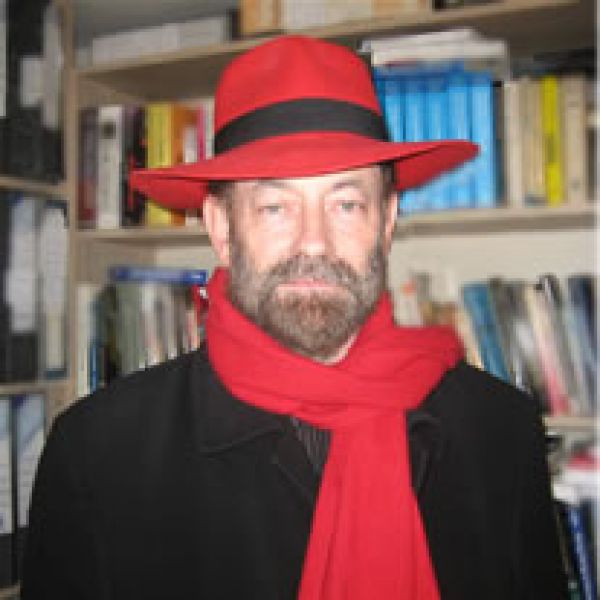 So much talk of mathematics and music relies on the score, a composer’s written-out calculation and musical proof. While on the page we might confidently identify isorhythmic patterns, spot a numerical signature in Bach or count out the prime numbers in Messiaen’s Quartet for the End of Time, what about as a listener? The extent to which such structures are intended for aural perception (and if not, for what exactly they are intended) is a question that continues to divide scientists and musicologists.
So much talk of mathematics and music relies on the score, a composer’s written-out calculation and musical proof. While on the page we might confidently identify isorhythmic patterns, spot a numerical signature in Bach or count out the prime numbers in Messiaen’s Quartet for the End of Time, what about as a listener? The extent to which such structures are intended for aural perception (and if not, for what exactly they are intended) is a question that continues to divide scientists and musicologists.
Philosopher and physician Raymond Tallis (pictured above) has been vocal in his suspicion of the claims of neuroscience to explain our perception and reaction to music. “I actually think neurology has very little to offer in our understanding of artistic experiences,” he explains. “What we know about music and the brain shows that it doesn’t clearly differentiate it from other stimuli that are quite unlike; Dopamine receptors are stimulated by music, by orgasms and by cocaine. I think we usually know which one we’re experiencing, but the brain can’t tell the difference, or for that matter between the St John Passion and 'Love Me Do'.”
 So where does that leave mathematics? “While mathematical formulae are not in themselves emotional, there are undoubtedly certainly satisfactions created by the completion, the fulfilment of these patterns. Between the polarised mathematical and emotional approaches to music an approach that focuses on motifs, themes and patterns does offer a halfway point; it’s a debate that reaches right to the heart of human consciousness.”
So where does that leave mathematics? “While mathematical formulae are not in themselves emotional, there are undoubtedly certainly satisfactions created by the completion, the fulfilment of these patterns. Between the polarised mathematical and emotional approaches to music an approach that focuses on motifs, themes and patterns does offer a halfway point; it’s a debate that reaches right to the heart of human consciousness.”
Yet perhaps nowhere in music is mathematics more exposed to the ear, more tantalisingly within a listener’s grasp than in 20th-century Minimalism. Whether visual or musical, the style has been described as art arranged mathematically in space, a space which for music is both temporal and linear. The functions of maths survive often verbatim in Minimalism’s musical language, at their most literal in the “process music” of Stockhausen and later Steve Reich (pictured above). Here the mathematical symbols – plus, minus, equals – are applied to repeating musical cells, performing their arithmetical functions upon them. Yet although mirroring the causal calculations of maths, process music sustains something of a witty, anarchic agenda, often subverting mathematical exactitude by introducing elements of chance or circumstance to the patterns themselves.
Steve Reich’s Drumming, which can vary in length by up to an astonishing half an hour, reflects this flexibility, giving performers control over the number of repeats involved. Growing organically out of a single bongo pulse, Reich’s technique of “phasing” sees the music deviate outwards, with each additional musician eventually phased into the texture with their own variant on the original pattern. The shifting result is genuinely kaleidoscopic, a lived mathematical calculation whose syncopations and fragmented melodic dialogues create a joyous dance that is anything but abstract.
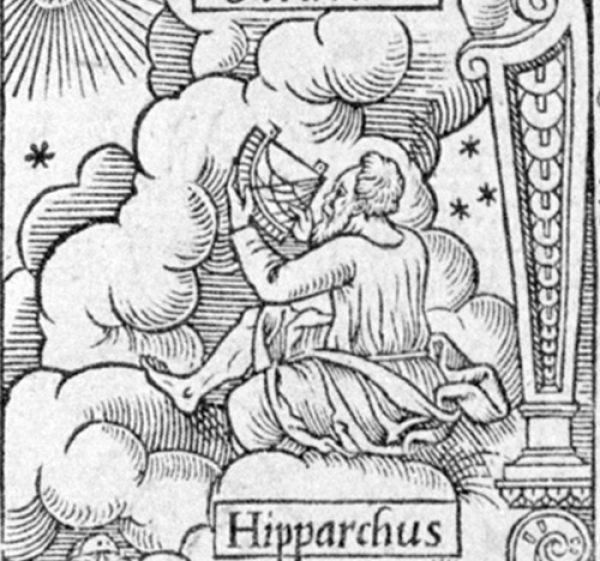 While the intentions of Bach and Mozart in their mathematical play remain necessarily uncertain, living composers offer the opportunity to unpack such processes and an answer to the question of how we can and should engage with this music. Contemporary composer Robert Saxton, describing his piano quintet of the 1990s, A Yardstick to the Stars, uncovers an approach to mathematics that is at once encoded into the musical structure and sustained more thematically.
While the intentions of Bach and Mozart in their mathematical play remain necessarily uncertain, living composers offer the opportunity to unpack such processes and an answer to the question of how we can and should engage with this music. Contemporary composer Robert Saxton, describing his piano quintet of the 1990s, A Yardstick to the Stars, uncovers an approach to mathematics that is at once encoded into the musical structure and sustained more thematically.
“The title of the piece came from a book I was reading about the history of mathematics. I came across this idea that Hipparchus invented trigonometry in order to work out how the planets were moving. He would draw lines in the sand and measure distance proportionally. I realised that this was the poetic idea of the piece, of taking two different journeys, one planetary (piano) and one earthbound journey (the strings). Although I’m not good at maths I’m very interested in the philosophical concepts, and I got a maths tutor to help me make a time graph in which the piano actually plays the procedures of the piece – the phrase lengths and number of pulses rather than the exact notes – at a different speed from the quartet.”
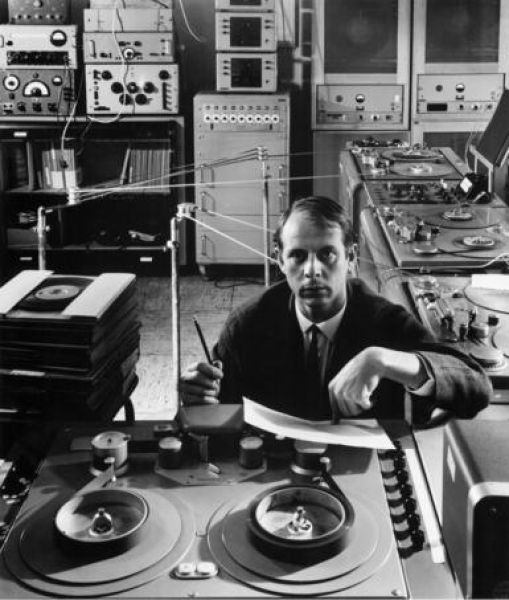 While mathematics has never been truly absent from the history of music – it was the 19th century that embraced the Golden Ratio and championed the rediscovery of Bach, the 17th and 18th that exploited the potential of the ground bass – it has been in the 20th century that mathematical processes have returned to the forefront of composition and musical analysis. For many, the rigid, procedural developments of the Serialists, of Stockhausen (pictured left), Boulez and Xenakis, represent a denial of emotion, a turning away from human truth. Yet we must remember that the first real stirrings of Serialism coincided with the First World War, developing further during the Second. With the orderly universe rent asunder and music tainted with political and national allegiances, composers were forced to seek truth and beauty in abstraction. “Using the sliderule it was possible to produce perfect intellectual objects that weren’t likely to make people march towards a firing line,” argues Raymond Tallis, “it was almost an issue of cleaning music of its uses.”
While mathematics has never been truly absent from the history of music – it was the 19th century that embraced the Golden Ratio and championed the rediscovery of Bach, the 17th and 18th that exploited the potential of the ground bass – it has been in the 20th century that mathematical processes have returned to the forefront of composition and musical analysis. For many, the rigid, procedural developments of the Serialists, of Stockhausen (pictured left), Boulez and Xenakis, represent a denial of emotion, a turning away from human truth. Yet we must remember that the first real stirrings of Serialism coincided with the First World War, developing further during the Second. With the orderly universe rent asunder and music tainted with political and national allegiances, composers were forced to seek truth and beauty in abstraction. “Using the sliderule it was possible to produce perfect intellectual objects that weren’t likely to make people march towards a firing line,” argues Raymond Tallis, “it was almost an issue of cleaning music of its uses.”
And so from the earthbound concerns of 19th-century music we fled back to the music of the spheres, to a searching for a truth that lay beyond rather than within. It may not be obvious at first hearing, it may never be obvious, but in the aggressive, unsympathetic numerical patterning of Xenakis, Berio and Elliott Carter we draw our own lines in the sand, construct our own yardstick to the stars. Through mathematics contemporary music continues to reach beyond itself, whether to the divine, the scientific absolute, or simply to the as yet unknown.
 Book tickets for The Cheltenham Music Festival 2011 until 10 July
Book tickets for The Cheltenham Music Festival 2011 until 10 July- See What's on at the Cheltenham Music Festival
Share this article
more Classical music
 Remembering conductor Andrew Davis (1944-2024)
Fellow conductors, singers, instrumentalists and administrators recall a true Mensch
Remembering conductor Andrew Davis (1944-2024)
Fellow conductors, singers, instrumentalists and administrators recall a true Mensch
 Hallé, Wong, Bridgewater Hall, Manchester review - meeting a musical communicator
Drama and emotional power from a new principal conductor
Hallé, Wong, Bridgewater Hall, Manchester review - meeting a musical communicator
Drama and emotional power from a new principal conductor
 Guildhall School Gold Medal 2024, Barbican review - quirky-wonderful programme ending in an award
Ginastera spolights the harp, Nino Rota the double bass in dazzling performances
Guildhall School Gold Medal 2024, Barbican review - quirky-wonderful programme ending in an award
Ginastera spolights the harp, Nino Rota the double bass in dazzling performances
 Queyras, Philharmonia, Suzuki, RFH review - Romantic journeys
Japan's Bach maestro flourishes in fresh fields
Queyras, Philharmonia, Suzuki, RFH review - Romantic journeys
Japan's Bach maestro flourishes in fresh fields
 Classical CDs: Swans, hamlets and bossa nova
A promising young pianist's debut disc, plus Finnish mythology and a trio of neglected British composers
Classical CDs: Swans, hamlets and bossa nova
A promising young pianist's debut disc, plus Finnish mythology and a trio of neglected British composers
 Christian Pierre La Marca, Yaman Okur, St Martin-in-The-Fields review - engagingly subversive pairing falls short
A collaboration between a cellist and a breakdancer doesn't achieve lift off
Christian Pierre La Marca, Yaman Okur, St Martin-in-The-Fields review - engagingly subversive pairing falls short
A collaboration between a cellist and a breakdancer doesn't achieve lift off
 Ridout, Włoszczowska, Crawford, Lai, Posner, Wigmore Hall review - electrifying teamwork
High-voltage Mozart and Schoenberg, blended Brahms, in a fascinating programme
Ridout, Włoszczowska, Crawford, Lai, Posner, Wigmore Hall review - electrifying teamwork
High-voltage Mozart and Schoenberg, blended Brahms, in a fascinating programme
 Sabine Devieilhe, Mathieu Pordoy, Wigmore Hall review - enchantment in Mozart and Strauss
Leading French soprano shines beyond diva excess
Sabine Devieilhe, Mathieu Pordoy, Wigmore Hall review - enchantment in Mozart and Strauss
Leading French soprano shines beyond diva excess
 Špaček, BBC Philharmonic, Bihlmaier, Bridgewater Hall, Manchester review - three flavours of Vienna
Close attention, careful balancing, flowing phrasing and clear contrast
Špaček, BBC Philharmonic, Bihlmaier, Bridgewater Hall, Manchester review - three flavours of Vienna
Close attention, careful balancing, flowing phrasing and clear contrast
 Watts, BBC Symphony Orchestra and Chorus, Bignamini, Barbican review - blazing French masterpieces
Poulenc’s Gloria and Berlioz’s 'Symphonie fantastique' on fire
Watts, BBC Symphony Orchestra and Chorus, Bignamini, Barbican review - blazing French masterpieces
Poulenc’s Gloria and Berlioz’s 'Symphonie fantastique' on fire
 Bell, Perahia, ASMF Chamber Ensemble, Wigmore Hall review - joy in teamwork
A great pianist re-emerges in Schumann, but Beamish and Mendelssohn take the palm
Bell, Perahia, ASMF Chamber Ensemble, Wigmore Hall review - joy in teamwork
A great pianist re-emerges in Schumann, but Beamish and Mendelssohn take the palm
 First Persons: composers Colin Alexander and Héloïse Werner on fantasy in guided improvisation
On five new works allowing an element of freedom in the performance
First Persons: composers Colin Alexander and Héloïse Werner on fantasy in guided improvisation
On five new works allowing an element of freedom in the performance

Add comment